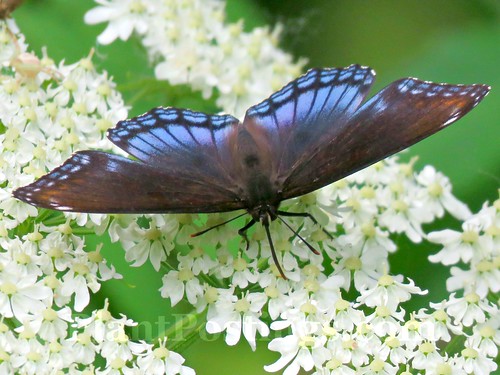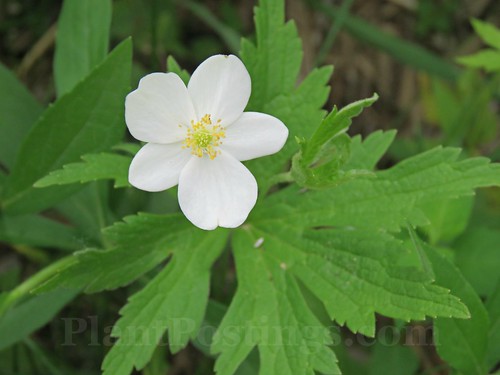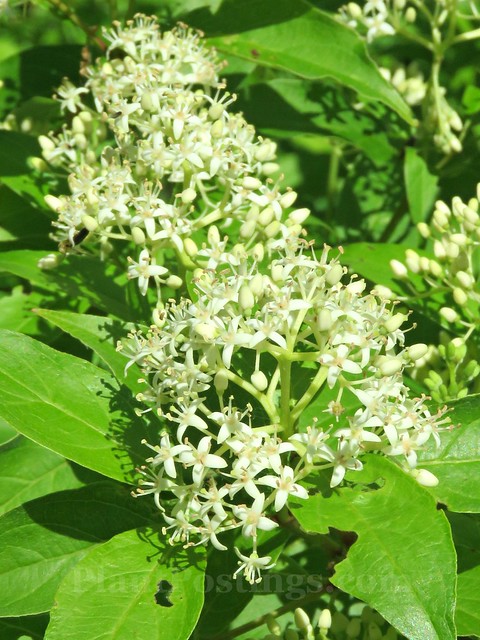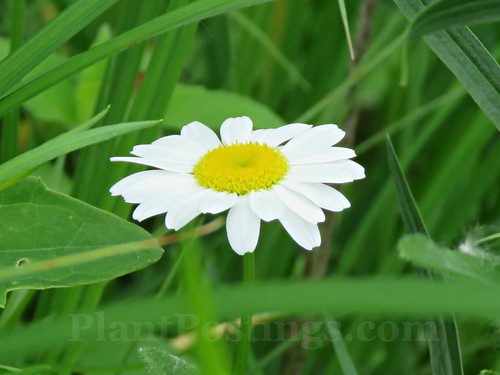
A few days ago, I headed to the Edna Taylor Conservation Park near Monona on the east side of Madison. Embarrassingly, I hadn't discovered this property until last summer, even though I lived just a few blocks away when I first moved to the area many years ago, and I currently live only a few miles south.
It's really an incredible park, combining wetland, savanna, and prairie habitats. Most of the park is semi-open woodland, similar to my garden, so I find much inspiration in the plants that thrive there.

In addition to noting plants currently taking center stage at the park, I also visited the park to survey butterflies for master naturalist citizen science reporting. I didn't see as many as I'd expected on this trip, but one, and then two, red-spotted purples delighted me as they nectared and floated around a patch of Cow Parsnip (Heracleum lanatum). I'm not sure I'd encourage this plant in my garden, but the bees, butterflies, and other pollinators were certainly enjoying it.

I sure would like to get Canada Anemone (A. canadensis) going in my garden. I tried broadcasting seed without success, so maybe I should try plants. But then rabbits would probably eat them. (As I'm writing this, I just watched a rabbit take down a Wild Bergamot (Monarda fistulosa)--a plant they're not supposed to like...one I planted last summer and one of several the rabbits have eaten recently. Before you suggest rabbit repellents, frankly, I've tried them all, and the only thing that works here is caging, but I can't cage my entire garden.)

Anyway...on to this beautiful bee on Potentilla (I'm not sure which species). The pollen on the bee's legs matches the pollen on the flower's anthers.

Ah, yes, New Jersey Tea (Ceanothus americanus). I tried this, and of course it was caged, but it never took off. Maybe I should try it again, in a different spot.

A cute little hoverfly on tall grass (I think this is a Bromus species).

A large Shasta Daisy (Leucanthemum spp.) near the stream. Yes, I could find a place for these in my garden.

The highlight of my hike, in addition to the butterflies, was seeing a large number of native Blue Flag Irises (Iris virginica var. shrevei) in bloom. They truly are graceful and lovely.
As I battle the rabbits, and struggle with my "edge" garden, I'm trying to appreciate the biodiversity that happens in transition habitats--where prairies meet woodlands, wetlands meet dry woods, sun meets shade. These are tough conditions. Plants that thrive here must adapt to wet years and dry years, dappled and unpredictable light, and competition from a wide range of plants. We can learn a lot from these adaptable plants.
Beth, sorry you're having trouble with rabbits. They're driving me crazy this year. Love your gorgeous photographs.
ReplyDeleteThanks, Susie. I think I've finally learned that I have to lower my expectations for the area in the garden where the rabbits hide. ;-) Good luck with your rabbit repellent strategies, and enjoy the summer!
DeleteThanks for sharing this park! We are heading to Madison this weekend to see my in-laws, and wanting to stay outside as much as possible. I've never heard of this park!
ReplyDeleteHi Kristin! I hope you enjoyed the Edna Taylor Park! It's truly in its glory mid- to late summer. Beautiful wild place surrounded by suburbs and city!
DeleteI’ve never been to this park, so it looks like I have a treat in store. I won’t talk about the rabbits living under my deck. Ugh.
ReplyDeleteOh, I share your frustration with the rabbits. I don't even find them cute anymore. Yes, the Edna Taylor Park is wonderful. I think it's in its glory in mid- to late summer, but it was lovely during my June visit, too.
DeleteI just read something about this park and I was going to ask you if you knew about it. My CISMA group is selling these Anemones this year. I debated about getting some. Maybe I will try them if there is any left. I too love the blue iris. They look so delicate but are tough as iron. I don't envy you the rabbits. They rabbits are so destructive here too.
ReplyDeleteOh, Lisa, I think you would really like this place. There are lots of little surprises around every corner. I hope you were able to get some Canada Anemones. They are happy little plants.
DeleteWhat an incredible park to have so close! Your butterfly photos are gorgeous. That's not a butterfly I can remember ever seeing before. I'm sorry to hear about the bad-mannered bunnies. It seems I have them here again this year too.
ReplyDeleteGood luck with your rabbit issues; they are mean aren't they? ;-) Yes, it's wonderful to have this free and open-to-the-public property nearby.
DeleteThe park sounds lovely. And inspiring.
ReplyDeleteClimate change is turning my whole garden into a transition zone, it is becoming difficult to plan for the increasingly unpredictable weather.
I have rabbits too but my main issue at the moment is with squirrels. For the first time this year they have stripped an apple tree of its growing fruit. They've also had pretty much all of my strawberries. They take them before they're ripe and I get a chance to pick. I have a plan for the strawberries. But how do I protect an apple tree?
Oh gosh, squirrels and chipmunks can be so challenging, too. The chipmunks, in particular, have fun digging in my pots. I would be really mad if they ate my strawberries (I don't grow them, but that would be tough)! Changing weather conditions just add more challenges on top, don't they? :(
DeleteHi Beth,
ReplyDeleteSquirrels are my problem. They have dug and eaten an entire row of gladiolus. They roll in the soil in my raised beds. Ripped out my turnips doing this rolling. I think they must be hot? And roll in the cool soil. Not sure, but we have so many squirrel in our neighborhood, I called this recent batch the juvenile delinquents.
I love the photo of the daisy.
Oh, dear. Squirrels seem to be frisky with my Asiatic lilies this year--digging in and around them so they collapse. Grrrr... But, the rabbits actually eat my plants down to the ground. Oh the misery. ;-)
DeleteIt is fun to walk thru a space which has plants which would flourish in your own garden. So much better than the frustrating, that was pretty but, needs regular watering in summer ...
ReplyDeleteYes, a very good point, Diana. I do find any gardens and any plants fascinating. And I enjoy visits to entirely different growing conditions. But in natural conditions, in particular, it's great to see what would naturally occur in a balanced, natural ecosystem in my area. Of course, the rabbits throw that entire dream out the window. ;-)
DeleteGreat photo of the hoverfly on Bromus "in full bloom" :)
ReplyDeleteThanks, Hollis. Grasses are so amazing and often underappreciated. I'm not sure what species the Bromus is, and I don't think it's native, but it sure is beautiful.
DeleteFantastic photos, Beth, as always. Love the Red-Spotted Purples! Didn't know about this park when we lived in Madison. Looks like it is definitely worth a visit!
ReplyDeleteThank you, Jason. Yes, I'd definitely recommend a trip to this park when you travel to Madison next. It's really at its peak in mid- to late summer when the Monardas, Rudbeckias, Echinaceas, and Silphiums are in bloom.
DeleteSounds like your rabbits really are voracious!
ReplyDeleteI have several bunnies in the garden this year (at least), but fortunately so far they have contented themselves mostly eating grass and weeds.
The chipmunks, on the other hand, are digging holes and tunnels in the garden beds. They have excavated and consumed all the tulip bulbs (after they bloomed, fortunately) and goodness knows what else they are looking for!
As for the New Jersey tea in your photo, that's a plant that I tried on a hillside (for drainage), but apparently had too much shade to thrive *and* was eaten down to the ground multiple years by deer and/or rabbits. So I've given up on it. But it looks lovely in your picture! :)
Hi Aaron: Thanks. Wow, you're lucky the bunnies are eating mostly grass and weeds. They do that here, too, but they also eat my plants. The babies are the worst--I guess they're just so hungry, and don't want to travel too far from the nest, so they're eating even "toxic" plants like Alliums and Euphorbias. The chipmunks and squirrels have been more bothersome than usual, too. Ugh.
DeleteWe all need to be adaptable these days, don't we? I didn't realize there were non-California Ceanothus, so thanks for educating me.
ReplyDeleteThat Iris is perfection, and the bee and butterfly photos are, too.
Beautiful and I saw some plants I don't know.Your butterflies are amazing. Sorry about your bunny problem,my pests are muntjak deer,squirrels and hordes of pigeons. I got rid of rabbits by fencing the whole garden.
ReplyDeleteBeautiful plants and beautiful photogaph. I was surprised by your pleasure in the Canada anemone. In the public gardens where I volunteer this flower takes up too too much room, as lovely as it is.
ReplyDelete